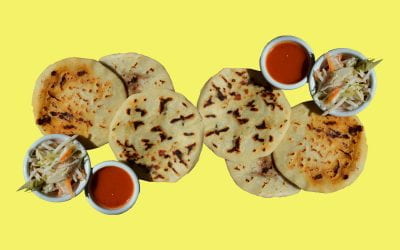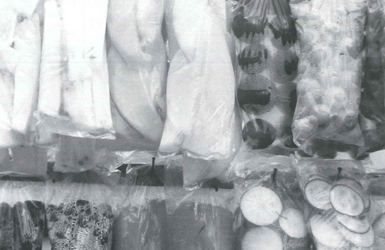The Commercialization of Oaxacan Chocolate
The Effect on Gender Roles
I spent the fall semester of my junior year in Harvard in Mexico. While I’d heard a lot about coffee in Chiapas, I never imagined that what would really capture my attention was chocolate in Oaxaca. For my senior thesis, I now plan to investigate the process of commercialization and future globalization on the chocolate market in Oaxaca, Mexico and how this affects Oaxacan women.
Cacao processing and chocolate consumption have a long history in this region and they are a daily part of life in Oaxaca. Since the 1950s three local companies have produced and marketed chocolate locally as well as in Mexico City. These companies are currently in the process of marketing new products to sell to the global marketplace. Although the use of electronic grinders is now common, ingredients are still added by hand, mixed by hand, packaged by hand and personally given to the customer. Studying the recent commercialization of chocolate in Oaxaca provides an important analysis of local-level responses to large-scale economic movement and pressure.
Little research has been done on the different issues surrounding the production, commercialization, and culture of cacao. Cacao has traditionally, and up until fairly recently, been processed and prepared on a small scale in the home by women. Since local demand was being met for such a long time by individual households and then local small-scale manufacturing, chocolate is one of the last indigenous foods to have become industrialized in the local economy.
There is substantial scholarship on food systems and food industrialization in “developing” nations on which to base my research. There are theoretical tools I will use to analyze food and culture in the disciplines of anthropology, sociology, and economics. Specifically, previous studies on indigenous foods have concluded that new forms of production and commercialization lead to the inevitable erosion of female control over household economies and a decrease in the item’s local symbolic importance. Is this the case in Oaxaca? Do women now have more time to do other activities than buying the individual products daily (cinnamon, sugar, almonds, and cacao seeds) and taking the ingredients to be processed? Do women feel that they are losing power over this important role of the economy? What influence have women had in the commercialization of cacao? How have the private and public spheres of consumption changed? Are more women working outside the home, making packaged hot chocolate a desirable product even within Oaxaca?
I plan to interview women who sell chocolate, the women, and perhaps men, who buy chocolate, interviewing from different generations. I will also interview the largest Oaxacan companies to understand their current and future plans, as well as the problems they have faced in entering an international market: Chocolates Mayordomo, Chocolates Guelaguetza, and Chocolates La Soledad. The existing companies are not based on farmer cooperatives, but rather on family and small business models. Are they supported by international investment or funding? Can the experience of Oaxacan chocolate companies teach us something about the way local companies can incorporate culture and artistry with efficiency on a large scale?
Spring/Summer 2001
Elena C. Chavez, as a Social Studies concentrator, pursuing a certificate in Latin American Studies, She spent this past fall semester living, studying, and speaking Spanish in Mexico City and traveling throughout Mexico, including Oaxaca and Chiapas. She felt comfortable in Mexico and most importantly, fell in love with Oaxacan chocolate.
Related Articles
Salvadoran Pupusas
There are different brands of tortilla flour to make the dough. MASECA, which can be found in most large supermarkets in the international section, is one of them but there are others. Follow…
Salpicón Nicaragüense
Nicaraguan salpicón is one of the defining dishes of present-day Nicaraguan cuisine and yet it is unlike anything else that goes by the name of salpicón. Rather, it is an entire menu revolving…
The Lonely Griller
As “a visitor whose days were numbered” in Buenos Aires, Argentina, he tossed aside dietary restrictions to experience the enormous variety of meat dishes, cuts of meat he hadn’t seen…



